original article posted here, translated and published with kinf authorization of their authors, Pavel Spurný, Jiří Borovička and Lukáš Shrbený. Updates at the end of the article.
Shortly after 1:30 a.m. Central European Time (CET, ie 0:30 a.m. UT) on the night from Saturday to Sunday, January 20/21, 2024, a very bright fireball was visible from all over the area covered by European Fireball Network, especially from the Northern part of it. It attracted the attention, despite the advanced hour of the night, of many casual witnesses. Its brightness was so great that it was observable not only from Czech Republic and Germany (atmospheric path occured West of Berlin) but also from all locations in central Europe which benefit of clear weather at the time. The great singularity of this dramatic fireball was it was the visible end of an asteroid discovered by the Hungarian astronomer K. Sarneczky about 3 hours before it collided with the Earth. Its collision path was subsequently confirmed by observations performed by twelve other European observatories. Nearly 90 minutes before the collision, this information was posted on social media. The location and time of the collision was correctly predicted to be West of Berlin at approximately half an hour after midnight Universal Time (UT). Some observers may have seen this dramatic astronomical phenomenon on the basis of this prediction. We would like to thank all those who sent us their observations ; this explains what caused this phenomenon.
To properly describe and explain this rare natural phenomenon, it is important that it is recorded by most of our cameras, which are designed for this purpose and located at 21 stations of the European Fireball Network, located mainly in the Czech Republic (15), but also in Slovakia (4), Austria (1) and Germany (1). Since the fireball flew North of our border over Germany (see Figure 1, the bolide is marked with a yellow arrow) and thanks to the clear weather all over the Fireball Network at the time of its flyby, we have records from all video stations that were within the visibility range of the bolide. And especially from cameras in the Northern part of the country, such as Frýdlant in Bohemia (Figure 2, where the composite image of the bolide from the video is shown), Růžová u Hřensko, Polom, Šindelová in the Ore Mountains or Polom in the Orlické Mountains. But we also got data from more distant locations, such as Kunžak in South Bohemia and other stations. Detailed photographic spectra and photometric light curve of the bolide were also recorded by the wide-angle camera at the Tautenburg Observatory. Thanks to all these instrumental records, it was possible to accurately describe the atmospheric orbit of the fireball to confirm its previous orbit in the Solar System, which was also known from observations of the asteroid before the collision in this specific case. It is also possible to determine the composition and structure of the original body (meteoroid). Moreover, it is very important at this point to determine the area where the remnants of the original body may have fallen.
So what exactly happened on the night of Saturday to Sunday 20/21 January, 2024, West of Berlin?
Exactly 32 minutes and 38 seconds after midnight UT, a small asteroid weighing around 100 kg entered the Earth’s atmosphere in a very steep angle of 75.4° to the Earth’s surface. The entire light path of the fireball, which was roughly West to East, as shown in Figure 2, was West of Berlin, and consistent with the prediction calculated from orbital data. On our cameras, the fireball began to glow at an altitude of 96.5 km. It reached a minimum absolute brightness of -14.5 magnitude (absolute brightness normalized to a unit distance of 100 km), greater than the brightness of the Full Moon, at an altitude of 33.8 km, and extinguished at 22.9 km above the ground approximately 50 km WNW of the center of Berlin. The body was initially moving at 15.2 km/s and travelled the 75 km light path in 5.5 sec. The bolide’s light path was characterized by large changes in brightness with several significant brightenings. The dynamics and photometry modelling for this fireball suggests that, although much of its original mass was consumed during its passage through the atmosphere, a non-negligible number of small meteorites of masses up to about 150 g very likely impacted the Earth’s surface in the region shown in Figure 3. It is therefore sensible to search the area as thoroughly as possible. Based on our data from observations prior its collision with the Earth, the interplanetary rock orbited the Sun in a typically asteroidal, relatively low eccentricity elliptical orbit with a semi-axis of 1.33 astronomical units (au, defined as the mean distance of the Earth from the Sun) inclined only 7.2° to the plane of the Earth’s orbit plane (the ecliptic), with an orbital period of 1.54 years.
Finally, we would like to emphasize that these are preliminary results and we expect to refine our conclusions further and publish important changes here. Thanks to the collaboration with Mike Hankey of the American Meteor Society, we will obtain two more video recordings of the bolide taken by the Allsky 7 network in Germany. The drop area will be refined once we have an accurate wind height model. Finally, we want to thank all the witnesses of the fireball flyby for their reports.
Pavel Spurný, Jiří Borovička and Lukáš Shrbený
Department of Interplanetary Matter
Astronomical Institute of the CAS,
Fričova 298
251 65 Ondřejov
Email: mph@asu.cas.cz
phone: 323 620 160 or 607 729 608 (only in urgent cases)
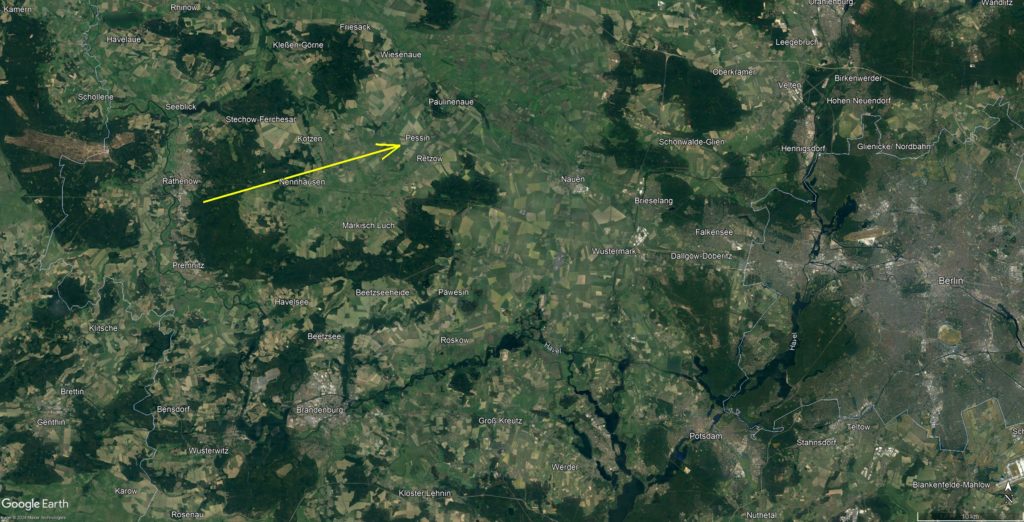
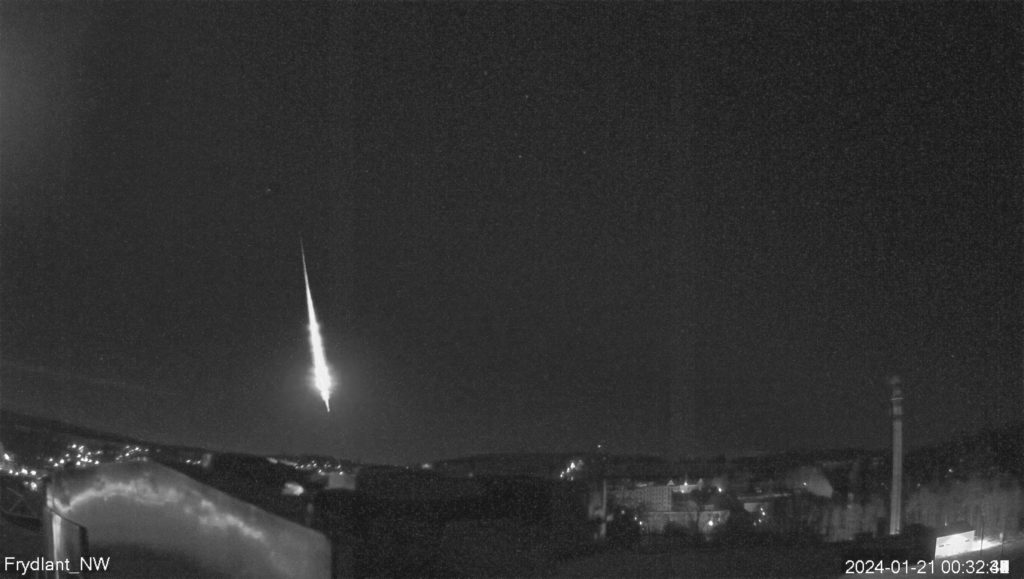
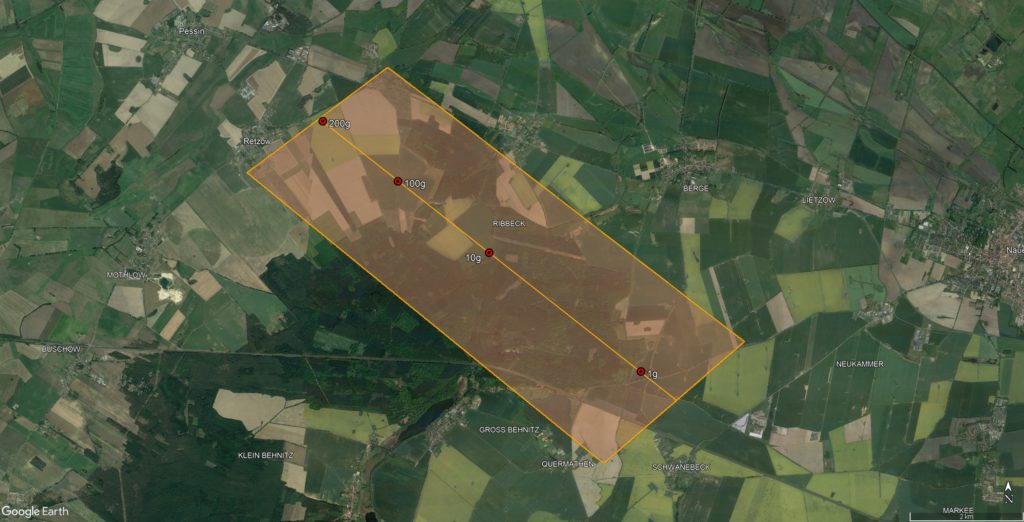
Update – January 22nd, 19:00 CET
This update is based on both a significant expansion of the camera footage we used to obtain the current results, and the use of an accurate wind height model to calculate the strewn field. It is therefore consistent with what we stated in the original report from the early morning hours.
While the original analysis was based on images from 3 full-field automatic cameras (DBK) and 3 video cameras (IP) located at 4 stations of the Czech part of the European Fireball Network, namely at the stations Frýdlant (DBK+IP), Šindelová (DBK), Polom (DBK+IP) and Jičín (IP), today’s analysis is calculated using 10 more records, six from DBK (Růžová u Hřensko, Přimda, Jičín, Kocelovice, Kunžak and Tautenburg), two from IP (Kunžak and Ondřejov) and two from Allsky7 cameras (AMS16 Ketzür and AMS22 Lindenberg). The result of this extension is a full confirmation and increase in the reliability of the fireball atmospheric data, especially the orbital parameters and the fireball dynamics. Therefore, the fireball path plotted in Figure 1 remains valid. The only change was in the determination of the fireball’s end altitude: from data of the the nearest station, AMS16 Ketzür, it occured 1.6 km lower than originally thought. In addition, we also obtained speed information for this part of the track. The second significant refinement came with the knowledge of the wind height model for a given place and time, which was developed for us by Dr. R. Brožková from the Czech Hydrometeorological Institute (ČHMÚ). Here, contrary to the position of the atmospheric path which wasn’t impacted, strewn field is clearly different. The new fall area is displayed in Figure 4, which shows a shift in a predominantly north-easterly direction, compared to previous modelisations (based on wind height data from the Lindenberg station east of Berlin at midnight on January, 21st). The newly marked fall area covers the most probable area where the meteorites should be located. It includes the vast majority of the expected meteorites, but it is possible that a small percentage of meteorites may be located outside of it. Meteorite counts and masses are based on a fragmentation model applied to the bolide braking data and its photometric light curve. By analysing video from the nearest station, AMS16, it was found that the largest meteorite can have a mass of up to 300 g.
Since this update is based on new data and information, we must thank Mike Hankey of the American Meteor Society for providing video recordings of the Allsky7 network bolide from the German stations AMS16 (operator Sirko Molau) and AMS22 (operator André Knoefel), and also Dr. Radmila Brožková of the Czech Meteorological Institute for quickly developing and providing a wind height model for the location and time of the bolide, which proved to be essential for the correct determination of the strewn field.
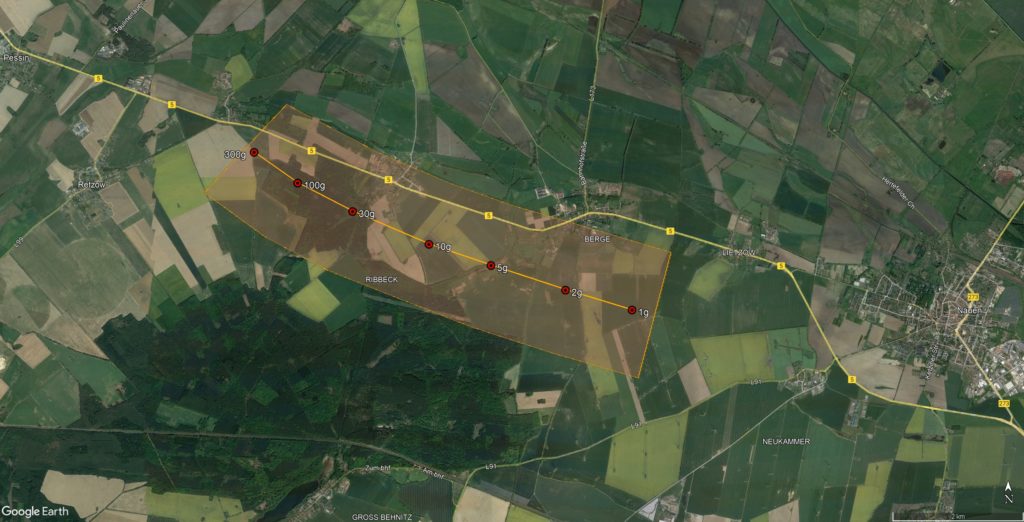
Images and data are not intended for further dissemination and publishing. Rather, please refer to this page or contact the author.



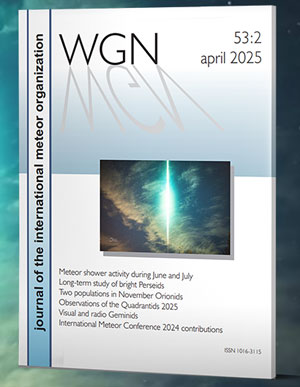
 You saw something bright and fast? Like a huge shooting star? Report it: it may be a fireball.
You saw something bright and fast? Like a huge shooting star? Report it: it may be a fireball.  You counted meteors last night? Share your results with us!
You counted meteors last night? Share your results with us!  You took a photo of a meteor or fireball? You have a screenshot of your cam? Share it with us!
You took a photo of a meteor or fireball? You have a screenshot of your cam? Share it with us!  You caught a meteor or fireball on video? Share your video with us!
You caught a meteor or fireball on video? Share your video with us!